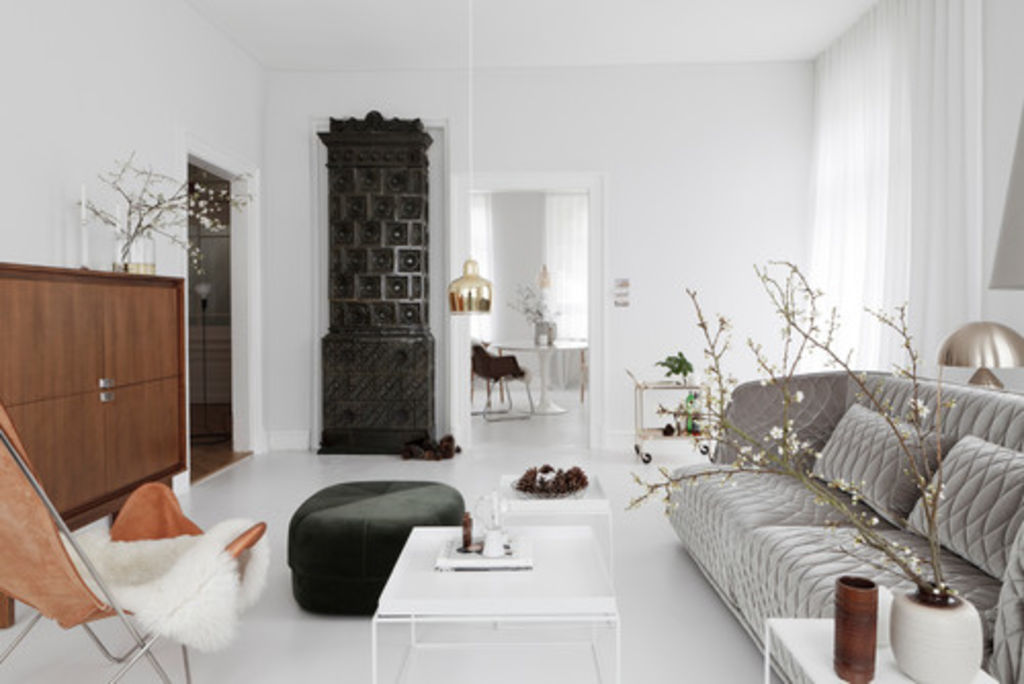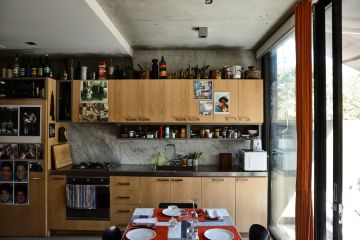How to choose the perfect colours for each room of your home

Author: Jenny Mason
When choosing which colour to paint a room, most of us consider our favourite colours first or what works aesthetically. But here’s another consideration to throw into the mix – the colour that is optimal for each room’s purpose, be it calming green in the bedroom or hunger-inducing red in the dining room.

The bedroom
The bedroom; the place you will spend about a third of your life. This is an area where you rest, sleep, dream, snuggle, stretch and cuddle. Where you rest is a very important place and so is the colour you choose for this retreat.
Green contributes to a peaceful rest
Green reduces anxiety and acts to soothe our minds. Traditionally, green symbolises new life and regeneration, which is just how you should feel every morning after a rejuvenating sleep.
Andrea Lucena-Orr, Dulux colour planning and communications manager says: “Greens are relaxing and calming and can create a natural feel, therefore are wonderful for chilling out.”

Wendy Greenhalf, general manager of the International School of Colour and Design, agrees: “Green is often associated with nature, comfort, calmness and relaxation, which works well as a colour of choice for a bedroom. If you lead a busy and hectic life, adding some soothing green to a bedroom can provide an energy balance and bring a sense of healing, helping you to relax and recharge after a good night’s sleep.”
Tip: Don’t forget when choosing your bedroom style, it is not just about wall colour. The bedroom is all about you. Adding signature touches and individual bedding and cushions also makes it so.

The study or office
An optimal study or office is a space with no interruptions and an atmosphere that allows calm focus. This is a place for you to concentrate, expand on ideas and complete your work. An office space is supposed to nurture your line of thought and support action.
Try a tranquil blue for a productive office
Blue is versatile, it helps you to feel calm and productive at the same time. A University of Texas study found that blue boosts productivity. It helps to lower your heart rate and allows you to focus, making it perfect for getting work done.
“The colours we use in our homes and surrounding environment affect our well being, emotionally and physically,” says Greenhalf.
Blue is associated with the sky, the ocean, water and even hygiene. Who doesn’t enjoy gazing at a clear blue sky or crystal blue ocean? According to a Creighton University study in 1999, people in blue or green office spaces felt “… the most centred, calm and hopeful toward their work”.
Tip: Aim for a minimalist office. A desk, computer, along with a calm blue space should equal productivity.
The dining room
Sharing nourishing food with your family is a happy occasion. You want it to be joyful and vibrant, and you want your diners to be hungry. Enjoying a meal is not only about passion for food, but about creating a warm and inviting atmosphere.
Choose red for a deep hunger
Red is an exciting, energising and warm colour. It is associated with danger, blood, love, roses and passion. Marketers know that the colour red makes people hungry; think of popular fast-food logos.
“Having a shade of red in a dining room can add a sense of drama, and is perfect for dining as reds are perceived to stimulate the appetite, and are also welcoming, vibrant and warm,” Lucena-Orr says
Greenhalf concurs: “Red hues have a stimulating effect and are the perfect choice for rooms that require warmth and physical movement, which is why they work well in dining rooms where you want to encourage conversation and warmth around the table.”
Tip: As red is such a strong colour, it can be effective even when used in splashes around where people eat.

The living room
This is where your household will come to unwind. It is a social space and the place you head to after a long day to switch off.
All-white living space to unwind
White walls make a space appear larger by reflecting light, and white is often associated with purity and cleanliness. Many beautiful aspects of nature are also white, such as clouds, sand on a beach, shells, waves, rocks and cliffs. White will help contribute to a bright sunroom and make a great place to lounge.
“An all-white living room can allow you the flexibility to expand, and gives a sense of purity, feeling of freedom and time to reflect,” Greenhalf says. “Warm whites will give you a softer, traditional look where clean cool whites will give a more contemporary crisp look to a room.”
“Whites can be versatile and add an ease in linking all of these materials, textures and colours together,” Lucena-Orr says.
Tip: White looks best when contrasting with various textures. Use colourful and neutral furniture and furnishings to break up white in a lounge room.
The cinema room
The point of having a cinema room is to watch films, sports, or your favourite television programs in an authentic setting. A perfect cinema allows comfort and total focus on the screen.
Pitch black for viewing pleasure
Being in a black room can affect people in different ways. Darkness is very much related to the night and black is connected to the unknown.

“Black is great for a cinema room or behind an LED screen in the living space. It helps with viewing colour and reduces light reflectance near a screen,” Lucena-Orr says.
Sitting in a dark room creates an atmosphere of mystery. A black cinema room allows viewers to focus on the only light in the room, the screen.
We recommend
We thought you might like
States
Capital Cities
Capital Cities - Rentals
Popular Areas
Allhomes
More







